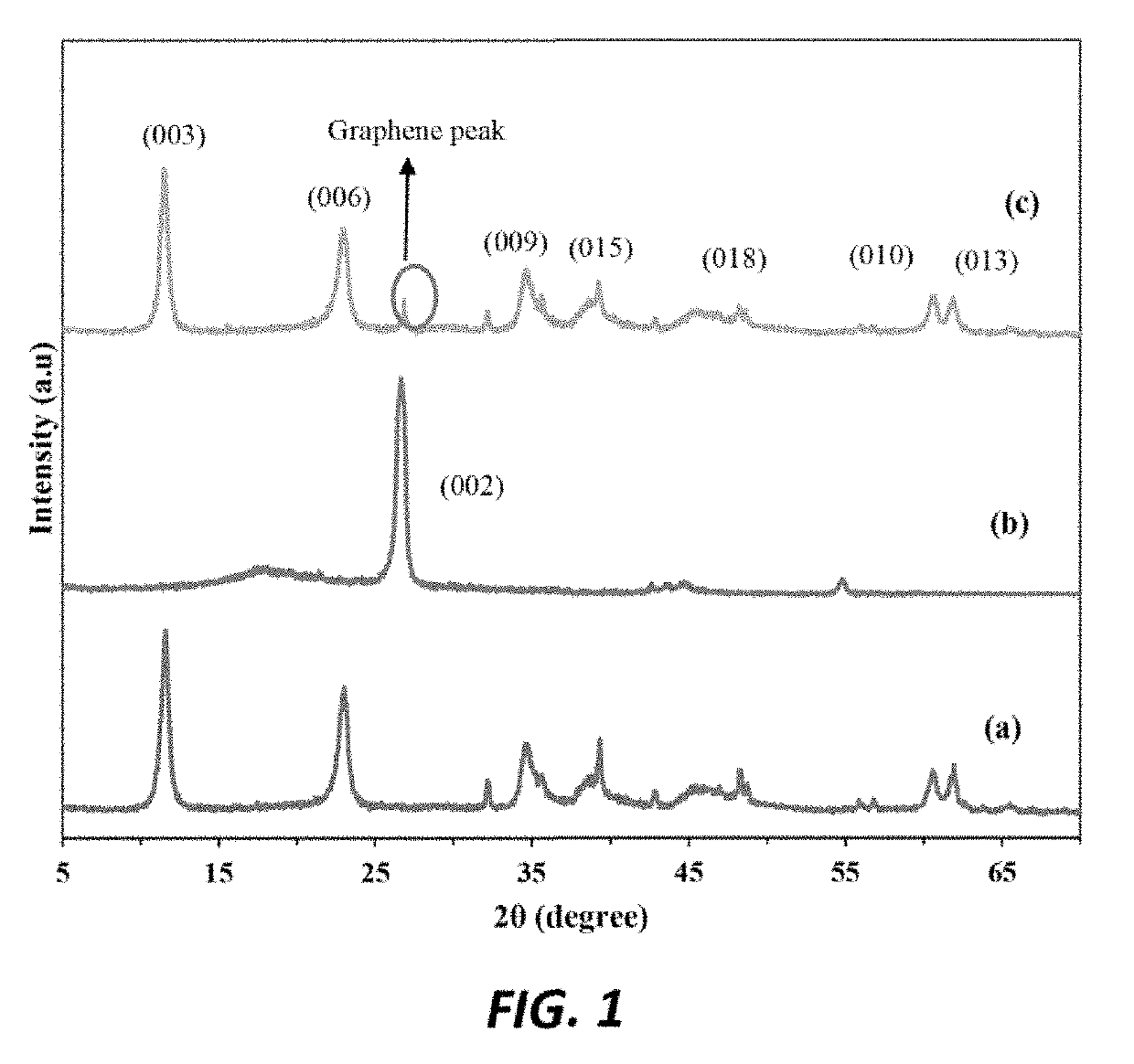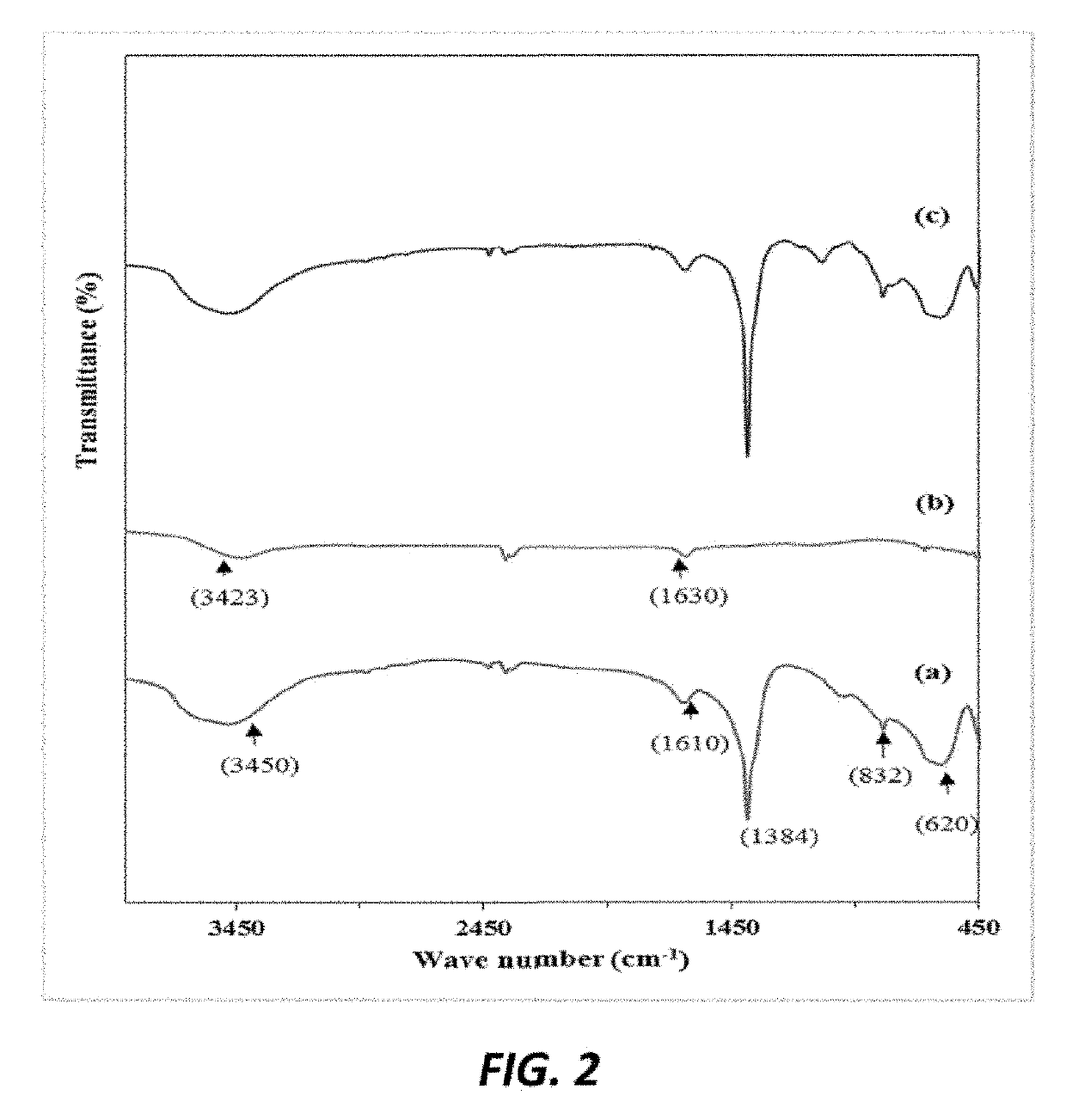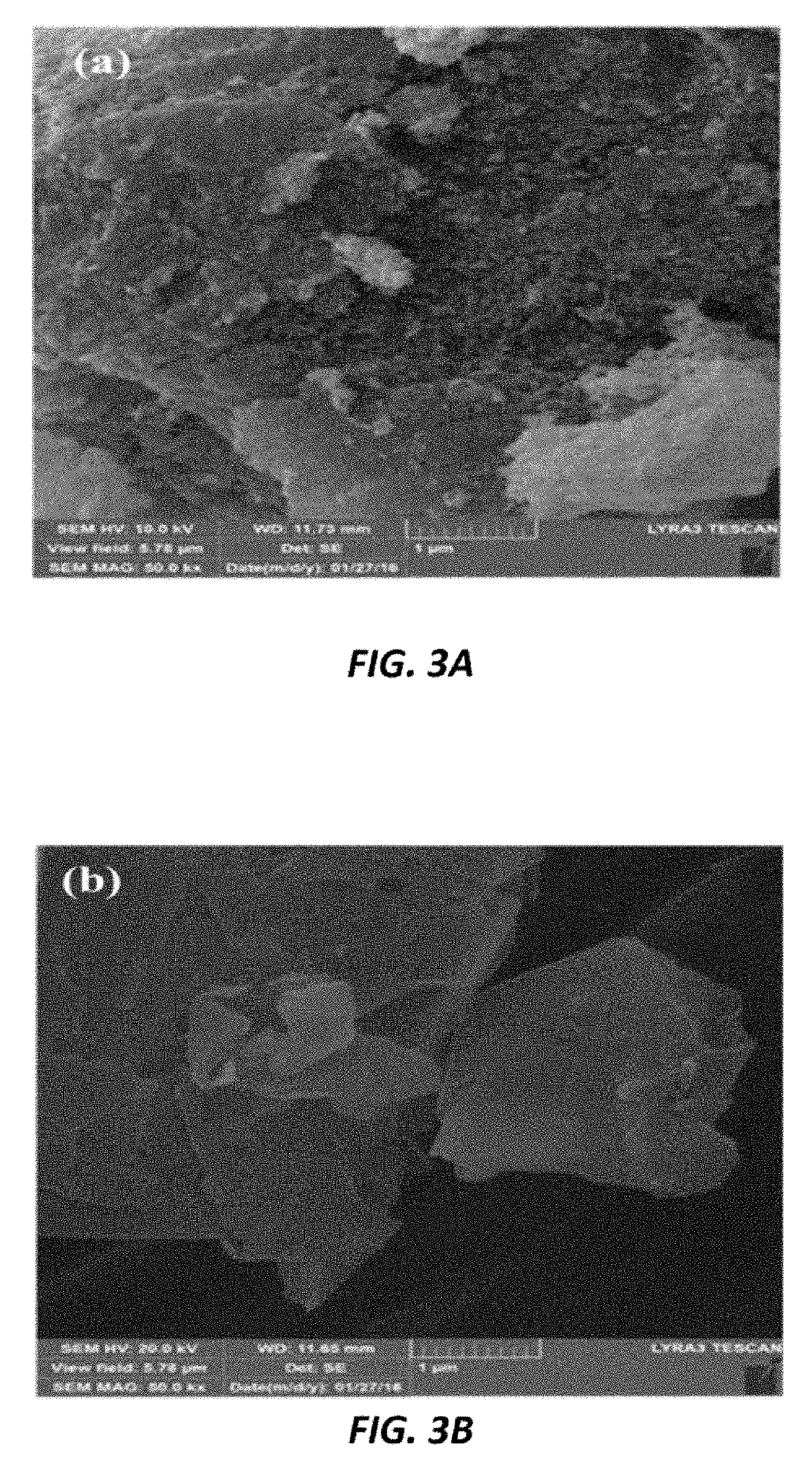In-situ polymerization method for producing a polyethylene nanocomposite
a polyethylene nanocomposite and polyethylene technology, applied in the field of polyethylene nanocomposite materials, can solve the problems of limited practical use, high production cost and low dispersion index of cnts, and pristine graphene is not generally compatible with organic polymers, and achieves higher catalyst activity and molecular weigh
- Summary
- Abstract
- Description
- Claims
- Application Information
AI Technical Summary
Benefits of technology
Problems solved by technology
Method used
Image
Examples
examples
Experimental
Chemical Reagents
[0119]Bis(cyclopentadienyl zirconium (IV) dichloride) >98% (C10H10Cl2Zr), Methylaluminoxane (MAO), Aluminum(III) nitrate nonahydrate [Al(NO3)3.9H2O], magnesium(II) nitrate hexahydrate [Mg(NO3)2.6H2O] and all other chemicals and solvents were provided by Sigma Aldrich Co. Graphene (96-99%, 50-100 nm) was purchased from Grafen Chemical Industries Co. (Turkey).
Preparation of MgAl LDHs
[0120]The standard co-precipitation method was adopted for the preparation of pure MgAl LDHs [E. L. Crepaldi, P. C. Pavan, J. B. Valim, Comparative study of the coprecipitation methods for the preparation of Layered Double Hydroxides, J. Braz. Chem. Soc. 11 (2000) 64-70. doi:10.1590 / S0103-50532000000100012—incorporated herein by reference in its entirety]. Briefly, precursor salts solution of both Mg(NO)2.6H2O (0.03M) and Al(NO3)3.9H2O (0.01 M) were initially well-mixed in 50 mL of deionized (DI) water. Subsequently, the pH was adjusted at 10±0.1 using 1M NaOH solution under vi...
PUM
| Property | Measurement | Unit |
|---|---|---|
| Temperature | aaaaa | aaaaa |
| Weight | aaaaa | aaaaa |
| Weight | aaaaa | aaaaa |
Abstract
Description
Claims
Application Information
 Login to View More
Login to View More - R&D
- Intellectual Property
- Life Sciences
- Materials
- Tech Scout
- Unparalleled Data Quality
- Higher Quality Content
- 60% Fewer Hallucinations
Browse by: Latest US Patents, China's latest patents, Technical Efficacy Thesaurus, Application Domain, Technology Topic, Popular Technical Reports.
© 2025 PatSnap. All rights reserved.Legal|Privacy policy|Modern Slavery Act Transparency Statement|Sitemap|About US| Contact US: help@patsnap.com



